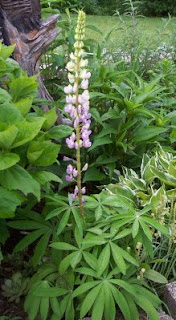
The picture below shows some that were transplanted earlier this spring. I like primroses best when they are mixed with other flowers like the picture above.

 This one is being crowded, so once the flowers surrounding it are done blooming for the summer, some of the plants will need to be moved around.
This one is being crowded, so once the flowers surrounding it are done blooming for the summer, some of the plants will need to be moved around. This particular variety grows from 25" to 30" tall and prefers full sun to partial shade. Cutting the faded flowers at the base of the plant will help keep them strong and healthy.
This particular variety grows from 25" to 30" tall and prefers full sun to partial shade. Cutting the faded flowers at the base of the plant will help keep them strong and healthy. Fast growing, they prefer full sun to partial shade. Give them lots of space to grow! Some varieties grow as tall as 30 feet and can be trained to climb a trellis. This one is overgrowing the butterfly garden. It's already been cut back once this spring.
Fast growing, they prefer full sun to partial shade. Give them lots of space to grow! Some varieties grow as tall as 30 feet and can be trained to climb a trellis. This one is overgrowing the butterfly garden. It's already been cut back once this spring. They prefer full sun to partial shade. Depending of the variety, the dainty flowers can grow from 15" to 36" tall. The leaves at the base of the plant grow to a height of 12" - 24" tall.
They prefer full sun to partial shade. Depending of the variety, the dainty flowers can grow from 15" to 36" tall. The leaves at the base of the plant grow to a height of 12" - 24" tall.

